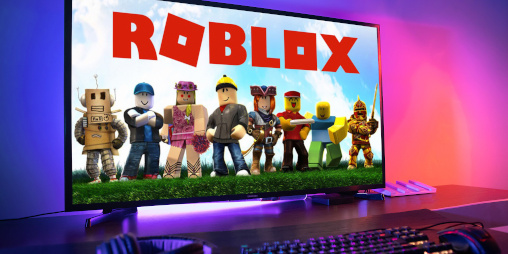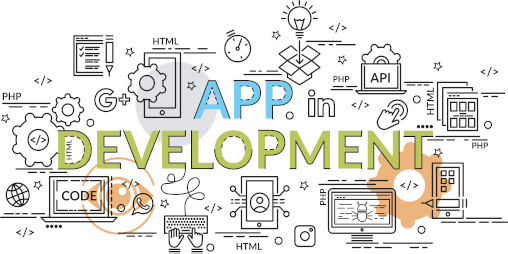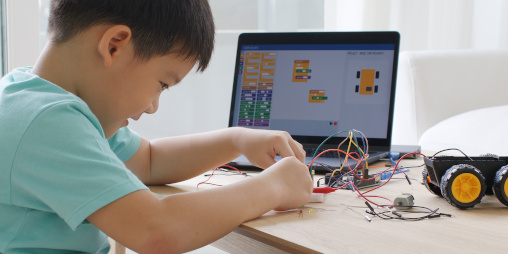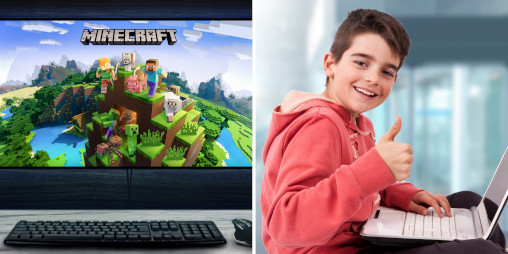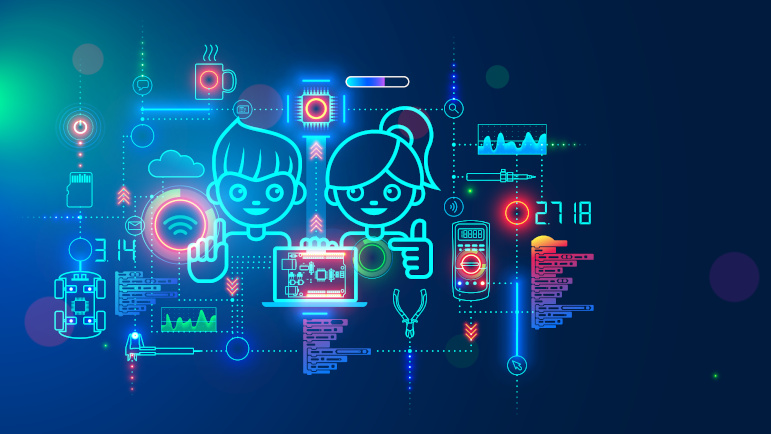
Programming for kids. What will children learn when they start coding?
Most children are likely to come into contact with programming in the future, no matter what profession they choose. Digital literacy will be useful to project managers, web developers, graphic designers and even doctors, who need to operate equipment and carry out tasks such as describing an ultrasound.
Not all children will become programmers – and that’s a good thing, because we need many other professions! However, every young person will benefit from the skills gained through coding.
Creators, not consumers. Let’s show children a different side of technology
Nowadays we might assume that children are very good with technology because they can handle electronic equipment without difficulty – looking up a cartoon on YouTube or defeating an opponent in a smartphone game means they simply need to make a few clicks on a screen. However, such activities do not develop true digital competences.
Digital competences allow kids in the virtual world to be creators rather than consumers. What’s the difference? When children watch YouTube videos on their tablets at home and find more related ones that sound appealing to them, they are consumers of interactive content. However, during a programming course – for example in the world of Minecraft, where they control a special agent and work out how to do everything more quickly and efficiently through code – they become creators. Because of this programming skill, children understand what is going on “backstage” to make things visible on the screen and learn how to make the hardware work with them. Contrary to outward appearances, many students still need education to stop them being digitally excluded and to learn to use technology for something other than entertainment.
Concentration, patience, persistence. Programming gives power
We all make mistakes, and we’ve all certainly come across some negative and rather demotivating feedback when we do. In programming, this approach would be detrimental: if programmers were criticised for every bug in the code, no code would ever be created. That is why our classes, both onsite and online, focus on debugging – i.e. a systematic search for errors in the code, analysis of the mistakes made and correction of the code.
Programming for children teaches patience and the ability to overcome discouragement. When children encounter difficulties while coding, they do not hesitate to show difficult emotions and sometimes they want to give up. However, we are there to help them get over that reaction – if we want to move forward with the curriculum, our young programmers have to overcome frustration. We cheer them on, and we are happy when they can overcome their resistance and see the task completed on the screen after they have put in some effort. They also learn to draw conclusions from the mistakes they made.
Perhaps surprisingly, programming also teaches kids to concentrate. Contact with electronic devices is often associated with distractedness and multitasking – especially if we work with computers on a daily basis and receive a lot of distracting messages or notifications. In the case of coding, things are completely different: this activity requires focus, analysis of the code, finding bugs, and patience in solving them.
Independence or group work? In programming you don’t have to choose
Just imagine how pleased children can be if, thanks to the well-written code, they can make everything in Minecraft look how they imagined it. Satisfaction with the working code increases self-confidence in young programmers. After all, with a few lines of code, they were able to tell these powerful machines what they wished for – and their wish was granted!
It’s likely that children will also become curious about the workings of appliances they use on a daily basis: perhaps a refrigerator, a microwave or a radio. It is good to broaden the child’s perspective this way and encourage them to learn about the world in a way that’s different from the consumer’s point of view.
What about group work? Perhaps the stereotype of programmers brings to mind a job spent in the comfort of one’s own home with headphones on. This association is not actually far from reality, but it’s not always the case that programmers create the code on their own. Such tasks are also done in a team.
On many of our programming courses for children, our students work together in the virtual world, logging into a shared platform and seeing each other through webcams. In pairs or in larger groups they decide: What will the city look like in Minecraft? Who will build the stadium today? Who will create the park? How will we share the work on this particular object?
Working in a group is a skill that is useful for most professions in the world. We help students acquire it at the very beginning of their education, to lay the foundations for later in life.
Programming for children and creative expression
Thinking of extra-curricular classes that will allow for creative expression most often leads to the idea of pursuing art or literarature. If parents see that their child is interested in creating, they usually focus mainly on drawing, painting or writing. Isn’t it surprising that coding will also work in this case?
Children don’t need to have any particular skills to try programming. You do not have to choose activities for “scientific brains” or keep those who are “artistically gifted” in mind. In coding such divisions are unnecessary, because digital technologies are great as means of artistic expression.
Children who want to create and express themselves will easily be able do this with code. Will they design buildings, draw plans, choose shapes and colours, or create animations? Or maybe they will edit movies and songs, or create graphics and interactive projects? A keyboard, a mouse and a screen are fantastic tools for a young creative mind. All you need to do is set children on the right track and encourage them to express themselves digitally, rather than simply sticking to analogue methods.
Programming teaches planning
Imagine you are planning to redo your bathroom. You have a general vision of what your bathroom should look like, but with the renovation team you will first determine what you need to do – working it out step by step and assessing how much it will cost. Programming classes for children look very similar to this. We provide students with a general plan of what they will do during the course or individual lessons, but they also need to know where to start and which steps will create results.
During programming lessons, students use algorithmic and sequential thinking and complete the challenges step by step. An element of this is iterative thinking – i.e. creating a detailed plan for the next period and seeing a gradual improvement of the project. This system allows us to maintain order: both in class and in the code. Students will find a wrong line in an organised code much more quickly than they will in a project full of chaos and chance.
The skill of planning will be perfect for a child in a busy world. By giving children the ability to programme, you help them learn to select the most important tasks, prioritise and complete tasks in small steps. You instil in them the idea of design-based thinking, which will often be useful to them in their adult life – not only at work, but also in everyday life.
To sum up: what does programming teach children?
- creative use of digital technologies,
- independent problem-solving and overcoming discouragement,
- creative expression using digital tools,
- planning and organising work,
- working in a group,
- curiosity about the world,
- asking good questions and finding information,
- agency and self-confidence.
By enrolling your child in a programming class, you open many doors for them, broaden their perspective and encourage them to solve problems on their own. Even if your child will not be creating complicated codes as a programmer in the future, they will use digital competences in any other profession. After all, coding is the new writing!

